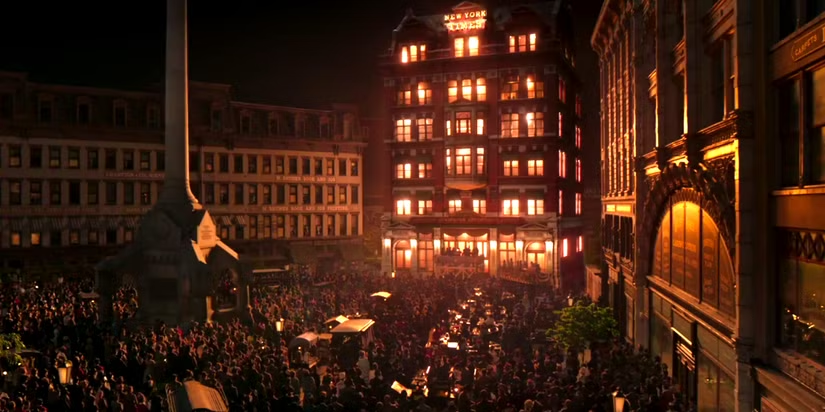The boomy decades immediately after World War II not only gave Americans rapid economic growth and moonshots but also a popular culture of progress. Walt Disney’s Tomorrowland, The Jetsons, and Star Trek made optimism about technology feel natural and permanent.
Alas, that cheery mood about progress had soured by the early 1970s. Oil shocks and stagflation slowed the economy and darkened imaginations. Visions of utopias gave way to dystopias. For half a century, Hollywood has mostly pictured technological advance as less promise than peril, whether through climate-collapse blockbusters or nightmares of artificial intelligence gone rogue.
Yet every so often — though hardly often enough — a story reminds us of the wonder that innovation once inspired. HBO’s The Gilded Age harkens back to an earlier inflection point in our relationship with progress. Set in 1880s New York, the series pits entrenched families against the arrivistes of the Second Industrial Revolution. The Russells (an approximate stand-in for the Vanderbilts), flush from railroads, crash elite Manhattan’s society’s gates while the venerable Van Rhijns cling to fading status. It’s a truly American story about economic dynamism and social mobility, including the tensions and conflict those propulsive forces generate.
The show, which premiered in 2022, was announced for a fourth season last month. I’m a latecomer still working through the first season. In episode seven, “Irresistible Change,” Thomas Edison’s electrification of New York takes center stage. Below the stairs, servants fret about what electricity might mean for their livelihoods. “When electricity comes, half our jobs go up in smoke. Cooking, cleaning, it’ll all be done with electricity before you know it,” mutters one maid. For workers whose survival depends on domestic labor, the taming of lightning looks like redundancy, not opportunity.
Above stairs and elsewhere, anticipation turns to exhilaration. On Sept. 4, 1882, New York grandees mingled with regular folk outside the New York Times building on Park Row. At the countdown, the façade blazes with electric light. Gasps give way to cheers. “This is a turning point in history,” exclaims one onlooker. For a moment, this Gilded Age metropolis of great wealth disparity is united in wonder at what the mind of modern man can create. (By the way, this really happened!)

The episode neatly captures the twin currents of those times: fear from those facing a changing workplace, awe from those glimpsing possibilities. The same divide seemingly defines debates about AI today. Detractors warn of job loss, bias, and runaway machines. Enthusiasts see powerful new tech tools to cure disease, reduce poverty, and accelerate discovery.
Of course, progress rarely arrives without trepidation, from English textile workers in the Luddite uprising of the early 1800s to Midjourney-hating visual artists today. But one lesson from Edison’s unveiling is that societies get to choose their story. If fear eclipses awe, innovation stalls. If awe prevails, risks are acknowledged but possibilities dominate. In 1882, at least, hopeful Americans chose to cheer and move forward.
The post A View of Progress, from the Gilded Age appeared first on American Enterprise Institute – AEI.











